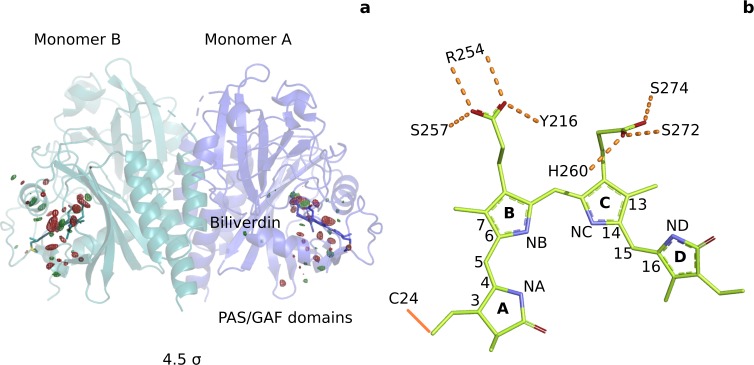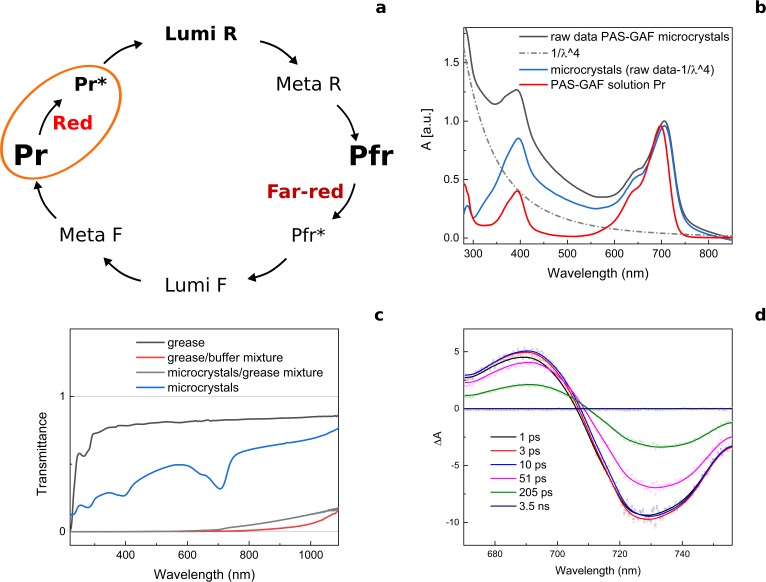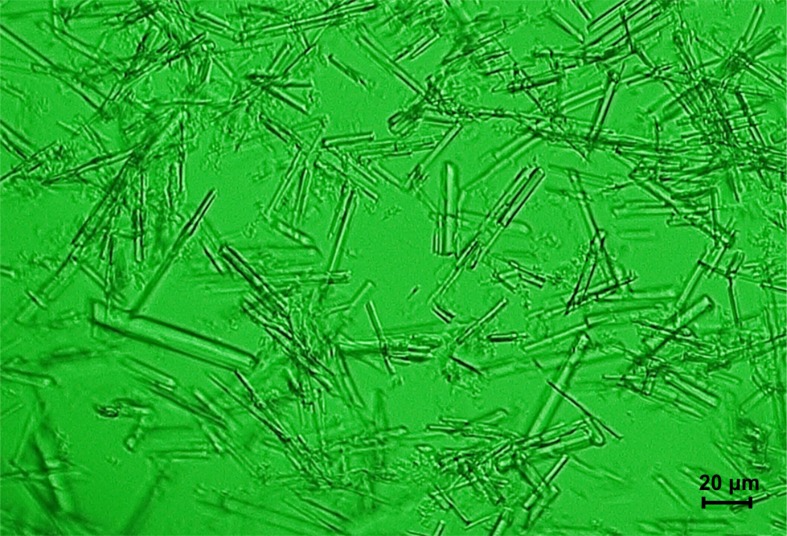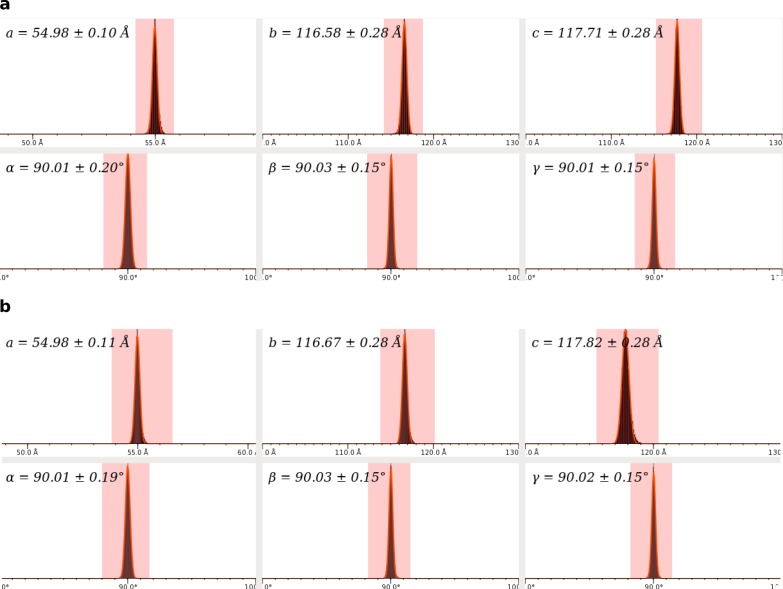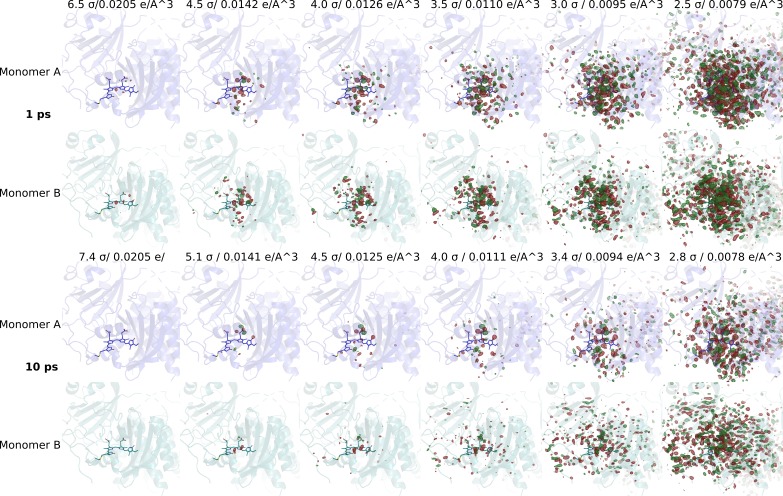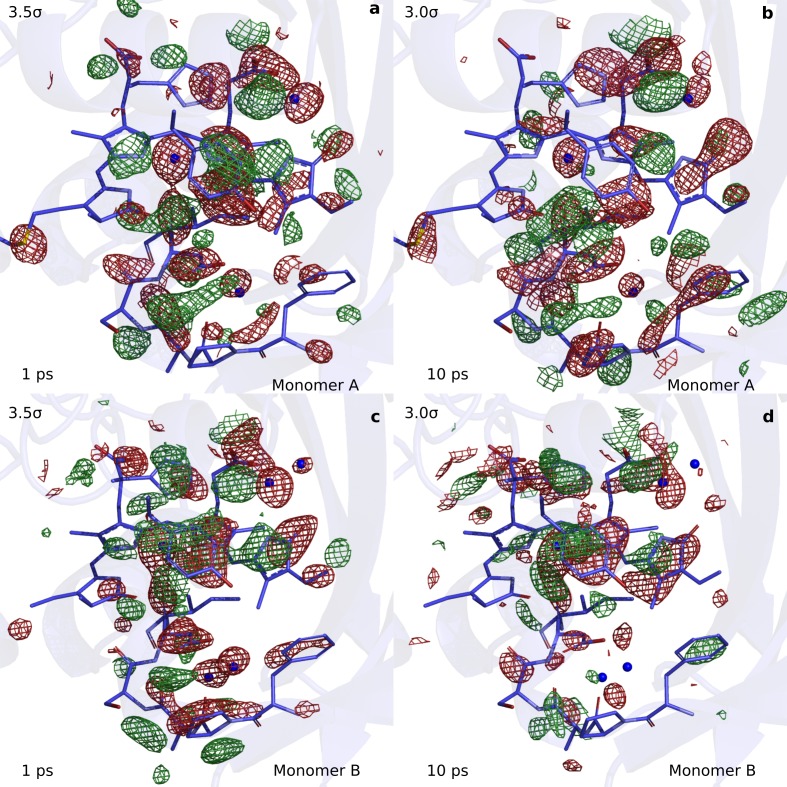(
a) Schematic illustration of the photoconversion between Pr and Pfr states in
DrBphP. We note that the final state of the PAS-GAF fragment (also referred to as chromophore-binding domain, CBD) does not have the same spectral shape as in full-length phytochromes. (
b) Raw absorption spectra of the
DrBphP
CBD microcrystals in buffer (black), scattering correction (1/λ
4, dash dot), scattering corrected absorption spectra of the
DrBphP
CBD microcrystals (blue), and
DrBphP
CBD in solution in the Pr-state (red). (
c) Transmission spectra of the grease (black), grease mixed with crystallization buffer (red),
DrBphP
CBD microcrystals in the grease matrix (measured in the 50 µm path length), and
DrBphP
CBD microcrystals in buffer. The microcrystals delivered to the beam are mixed with a viscous grease media. Although the Super Lube grease used in SFX experiments has a low background for X-rays, once it is mixed with the aqueous crystal buffer, the microcrystal/grease mixture exhibits significant scattering of visible light. The scattering varied with the mixing procedure. For the optical measurements, we reproduced the mixing procedure used at the XFEL as closely as possible. We estimate that the light intensities inside the grease jet are attenuated by at least two orders of magnitude. (
d) Transient absorption spectra of
DrBphP
CBD microcrystals in buffer taken at different time delays after excitation. The spectra show a typical excited state signal of phytochromes (
Toh et al., 2010). A Lumi-R signal was not observed, which is typically present on the ns-timescale after the excitation in the transient optical absorption data of phytochromes in solution.

